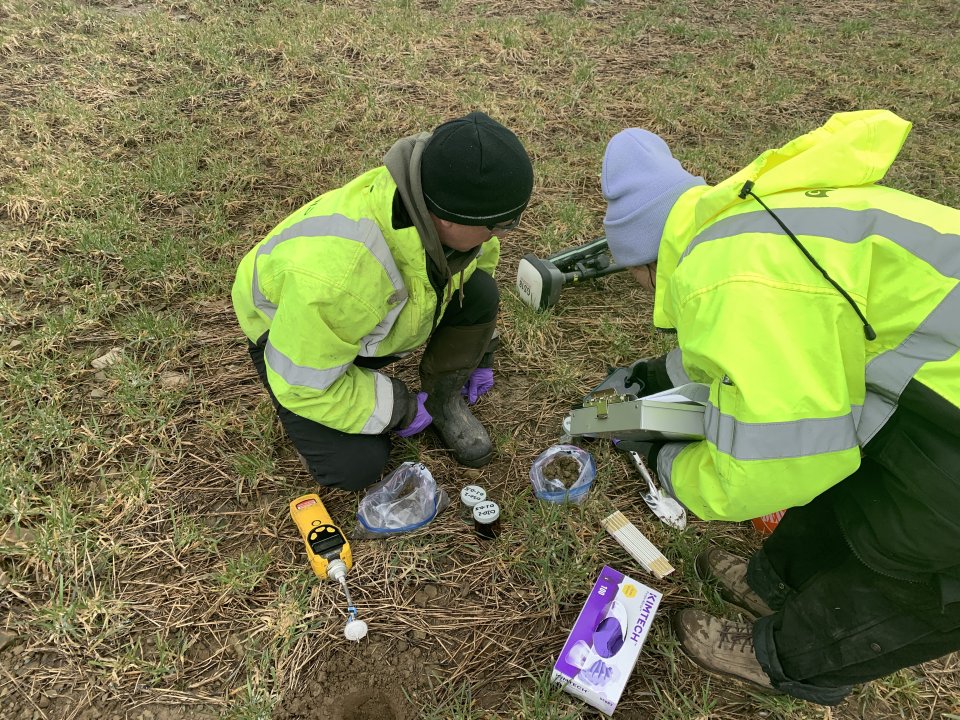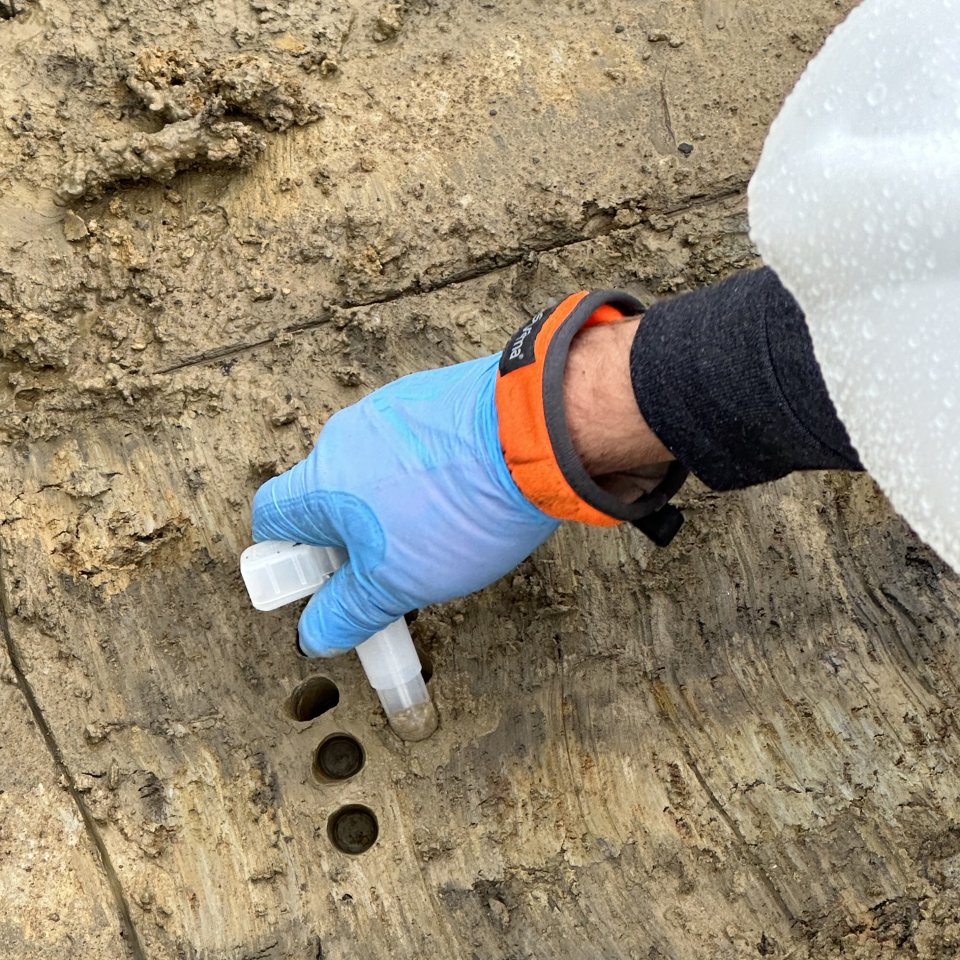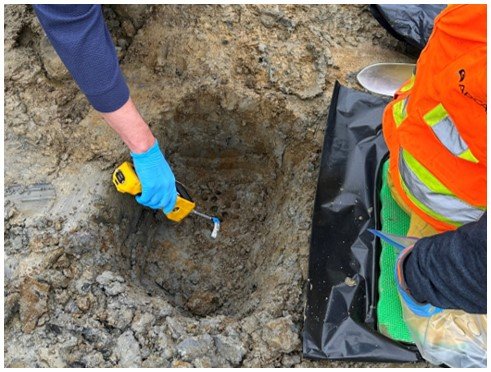Soil and Sediment Sampling Results Quick Reference Guide
On This Page:
- Data Terms and Definitions
- Data Qualifiers and Units of Measure Key
- Understanding “Parts Per”
- Understanding the Numbers
EPA conducted direct oversight of all Norfolk Southern soil sampling efforts, which included property inspections for evidence of soot or ash. These property inspections evaluated whether shallow soil near the derailment site may have been contaminated by smoke particles from the derailment fire and subsequent vent and burn.
EPA’s review of preliminary results indicates that the vast majority of reportable concentrations of semi-volatile organic compounds and dioxin/furans are consistent with known concentrations for soil in urban and rural areas. A few properties with elevated levels of compounds will be evaluated for further assessment. To protect privacy, property locations will not be provided in the online data tables.
Key Information:
- Crews sampled for 46 chemicals
- Samples were taken at depths of 0-1 inches and 1-6 inches
- Only certified laboratories analyzed the results



Data Terms and Definitions
Validated vs. Non-Validated Data:
Validated (final) data has been checked for accuracy and for quality of the source data. Non-validated (preliminary) data has not had the same level of review.
Method Detection Limit (MDL):
The calculated minimum concentration that the chemical can be measured at.
Reporting Limit (RL):
The smallest amount of a chemical that can be reported by a laboratory. No
Screening Level (NSL):
When the concentration of a chemical is lower than could be detected in the method used by the laboratory. Surrogate: To make sure a laboratory can correctly measure a specific contaminant, a similar chemical (surrogate) is used to ensure that the test can accurately measure it. Blank: This is a sample container, often filled with distilled water, that is tested as a clean control alongside the actual test samples.
Data Qualifiers and Units of Measure Key
U:
The contaminant was not detected
J:
Indicates an estimated value and is used when the concentration in the sample is below the reporting limit but above the detection limit.
B:
Indicates that the compound was found in the blank and sample. Blanks are used to determine if cross-contamination is present in lab samples.
mg/kg:
Milligram per kilogram
Understanding “Parts Per”
A way of expressing very small concentrations of substances is to use “parts per” an amount.
- Parts per million (ppm) means out of a million
- Parts per billion (ppb) means out of a billion
- Parts per trillion (ppb) means out of a trillion
(This is similar to percent meaning out of one hundred.)
These are typically used to describe concentrations of a substance in water or soil.
- 1 ppm is roughly equivalent to 1 milligram of something per liter of water (mg/l) or 1 milligram of something per kilogram of soil (mg/kg).
- Dioxin results are often referred to in parts per trillion (ppt), such as 1ppt = 0.000001 mg/kg.
Understanding the Numbers
In the data set, you will see numbers written out in scientific notation. Scientific notation is a shortcut for writing very small or very large numbers.
The following examples of data written in scientific notation will be used to demonstrate how to convert them to more easily understandable numbers:
- 1.1e-06 mg/kg (very small)
- 2.4e04 mg/kg (very large)
Steps to converting the numbers:
- Identify the number on the right-hand side of the e: “-06” for 1.1e-06 and “04” for 2.4e04.
- For the negative number of “-06” identified in Step 1, move the decimal point in the result of 1.1e-06 six places to the left and add zeros to get 0.0000011.
- For the positive number of “04” identified in Step 1, move the decimal point in the result of 2.4e04 six places to the right and add zeros to get 24,000.
- The numbers are now converted into more easily understandable numbers:
- 1.1e-06 mg/kg = 0.0000011 mg/kg
- 2.4e04 mg/kg = 24,000 mg/kg
